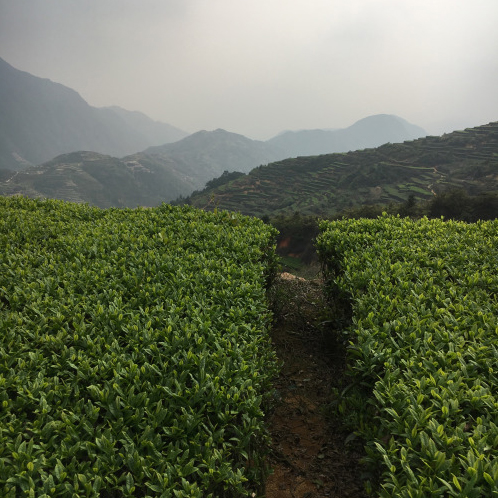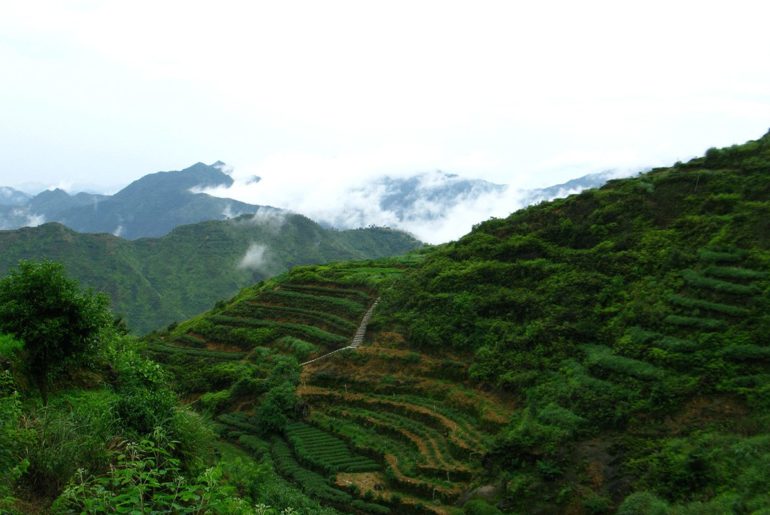The “teapot” as a concept is seemingly a simple device, but each individual teapot has a unique functionality directly related to its material composition and vessel form. When choosing a teapot for use or purchase there are a few factors to consider. Tune in to Facebook live for Teance Tea Lab with Trevor on Wednesday 9/12 at 10am for more information. MATERIAL COMPOSITION GLAZED CERAMIC Does not add, take away, or adjust the flavors of the tea. Has a high retention for the water temperature. This means the hot water put in the glazed ceramic vessel will not lose its heat very fast. Ideal for most teas and herbal teas. The most neutral material of the three. UNGLAZED CERAMIC OR STONEWARE Yixing ware is a typical example. Water temperature retention is similar to glazed wares This material is porous. These porous wares will season with usage. This means the tea…
How to Steep Tea without Instructions
You just found an old bag of tea, or your friend gifted you some special tea, but there are no steeping instructions. Do not fret, steeping without instructions is easy if you know what to look for. IDENTIFY THE CATEGORY OF TEA: What kind of tea do you have? Green, oolong, red, etc. Different categories of tea require different water temperatures. If the leaves are green and small, you are looking at green tea. If the leaves are covered in small white hairs, then it is a white tea. If the leaves are green and big or rolled, you have a light oolong. Dark, big and/or rolled leaves are likely charcoal roasted oolongs. Small, dark leaves are red/black tea leaves. (Pu-erh tea and herbal teas will be addressed in another post.) Try your best to categorize in order to find a water temperature to start with: Green- 160^F White- 180^F…
5 Things to Never do to Tea
1. Leaving Dry Tea Leaves Exposed Dry tea leaves should be stored properly. If dry tea leaves are not stored “air-tight and out-of-light” then they will lose their own essence faster as well as take on unwanted aromas and flavors from the surrounding atmosphere. 2. Using Cold Teaware This is the most frequent mistake that people make. It is imperative to heat your tea pot or gaiwan by pouring hot water in, letting the vessel heat up, and then pour out before adding tea leaves. This assures that the temperature of the water added with the tea leaves will not rapidly cool upon entering the vessel. Proper and stable water temperature is required for a smooth and elegant flavor extraction. 3. Using Boiling Water While some teas can handle boiling water, no tea steeps best with boiling water. Remember: 212^F is boiling 205^F is ideal for most teas (oolong, red/black,…
Monkey Picked Tieguanyin
Monkey Picked Tieguanyin, one of the oldest traditions in tea lore, is made famous mostly by the Southern Cantonese, whose Dim Sum parlours favor either Pu-erh or Monkey Picked. Most in the tea world do not know much about this tea, a long roasted, highly carmelized, very strong version of the legendary Tieguanyin. People often ask me if this tea was actually harvested by monkeys, and some misinformed blogs and tea merchants even make claims that it is. While it is not picked by monkeys, those who harvest this tea from Anxi’s precarious, 70-degree slopes possess considerable monkey-like prowess, hence its nick name. Here, the altitude, fog and light spring rains are met with perfect, four-directional winds that together create ideal conditions for pest resistance and optimal growth. This dark roast’s nutty, rich, honey-like body carries pervasive, warm-chocolate notes and an accompanying, intoxicating aroma achieved by custom roasting over charcoal…
The First of the Taiwan oolongs
Taiwan, a small island rich in fruits and agriculture, as well as, traditional Chinese and indigenous cultures alike, is also one of the most important tea regions in the world. One can not claim to be a tea aficionado without having some first hand experiences with Taiwan oolong teas. This season, Taiwan has been afflicted with bad weather like other regions, and all of the harvests have been delayed. Baochong, for example, one of our favorite oolong teas of all time, has just been harvested and ready to ship to us. Boasting of the intense fragrance of lilac flowers and gardenias, with a vegetal sweet taste and superb refreshing finish in the palate and throat, this is a lightly oxidized oolong, so that one can enjoy the fresh nutrients of green tea, while enjoying the best aromatics that an oolong as to offer. In the region across the way is…
The Tea Genome
Check it out: the tea genome has been sequenced! “Tea is the world’s oldest and most popular caffeine-containing beverage with immense economic, medicinal, and cultural importance. Here, we present the first high-quality nucleotide sequence of the repeat-rich (80.9%), 3.02-Gb genome of the cultivated tea tree Camellia sinensis. We show that an extraordinarily large genome size of tea tree is resulted from the slow, steady, and long-term amplification of a few LTR retrotransposon families. In addition to a recent whole-genome duplication event, lineage-specific expansions of genes associated with flavonoid metabolic biosynthesis were discovered, which enhance catechin production, terpene enzyme activation, and stress tolerance, important features for tea flavor and adaptation. We demonstrate an independent and rapid evolution of the tea caffeine synthesis pathway relative to cacao and coffee. A comparative study among 25 Camelliaspecies revealed that higher expression levels of most flavonoid- and caffeine- but not theanine-related genes contribute to the increased production of…






